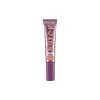What's inside
What's inside
 Key Ingredients
Key Ingredients

No key ingredients
 Benefits
Benefits

 Concerns
Concerns

 Ingredients Side-by-side
Ingredients Side-by-side

Water
Skin ConditioningDimethicone
EmollientCyclopentasiloxane
EmollientMethylpropanediol
SolventEthylhexyl Palmitate
EmollientDimethicone/Vinyl Dimethicone Crosspolymer
Skin ConditioningLauryl PEG-10 Tris(Trimethylsiloxy)Silylethyl Dimethicone
EmulsifyingCetyl PEG/PPG-10/1 Dimethicone
EmulsifyingSodium Chloride
MaskingPolyglyceryl-3 Diisostearate
EmulsifyingPhenoxyethanol
PreservativePolyisobutene
Bis-Diglyceryl Polyacyladipate-2
EmollientCaprylyl Glycol
EmollientChlorphenesin
AntimicrobialXanthan Gum
EmulsifyingMagnesium Aluminum Silicate
AbsorbentCyclotetrasiloxane
EmollientEthylhexylglycerin
Skin ConditioningCI 77891
Cosmetic ColorantCI 45380
Cosmetic ColorantCI 45410
Cosmetic ColorantCI 15850
Cosmetic ColorantWater, Dimethicone, Cyclopentasiloxane, Methylpropanediol, Ethylhexyl Palmitate, Dimethicone/Vinyl Dimethicone Crosspolymer, Lauryl PEG-10 Tris(Trimethylsiloxy)Silylethyl Dimethicone, Cetyl PEG/PPG-10/1 Dimethicone, Sodium Chloride, Polyglyceryl-3 Diisostearate, Phenoxyethanol, Polyisobutene, Bis-Diglyceryl Polyacyladipate-2, Caprylyl Glycol, Chlorphenesin, Xanthan Gum, Magnesium Aluminum Silicate, Cyclotetrasiloxane, Ethylhexylglycerin, CI 77891, CI 45380, CI 45410, CI 15850
Water
Skin ConditioningDimethicone
EmollientIsododecane
EmollientGlycerin
HumectantPEG-10 Dimethicone
Skin ConditioningPropylene Glycol
HumectantMica
Cosmetic ColorantPhenyl Trimethicone
Skin ConditioningDisteardimonium Hectorite
StabilisingPhenoxyethanol
PreservativeMagnesium Sulfate
Propylene Carbonate
SolventBenzoic Acid
MaskingButyrospermum Parkii Butter
Skin ConditioningTocopheryl Acetate
AntioxidantSodium Hyaluronate
HumectantDisodium EDTA
Simmondsia Chinensis Seed Oil
EmollientDehydroacetic Acid
PreservativeSodium PCA
HumectantUrea
BufferingCitrullus Lanatus Fruit Extract
Skin ConditioningTrehalose
HumectantEthylhexylglycerin
Skin ConditioningHexylene Glycol
EmulsifyingTriethoxycaprylylsilane
Aluminum Hydroxide
EmollientSynthetic Fluorphlogopite
Polyquaternium-51
Skin ConditioningCaprylyl Glycol
EmollientTriacetin
AntimicrobialSodium Benzoate
MaskingCitric Acid
BufferingTin Oxide
AbrasiveCI 77891
Cosmetic ColorantCI 77491
Cosmetic ColorantCI 77492
Cosmetic ColorantCI 77499
Cosmetic ColorantCI 12085
Cosmetic ColorantCI 73360
Cosmetic ColorantWater, Dimethicone, Isododecane, Glycerin, PEG-10 Dimethicone, Propylene Glycol, Mica, Phenyl Trimethicone, Disteardimonium Hectorite, Phenoxyethanol, Magnesium Sulfate, Propylene Carbonate, Benzoic Acid, Butyrospermum Parkii Butter, Tocopheryl Acetate, Sodium Hyaluronate, Disodium EDTA, Simmondsia Chinensis Seed Oil, Dehydroacetic Acid, Sodium PCA, Urea, Citrullus Lanatus Fruit Extract, Trehalose, Ethylhexylglycerin, Hexylene Glycol, Triethoxycaprylylsilane, Aluminum Hydroxide, Synthetic Fluorphlogopite, Polyquaternium-51, Caprylyl Glycol, Triacetin, Sodium Benzoate, Citric Acid, Tin Oxide, CI 77891, CI 77491, CI 77492, CI 77499, CI 12085, CI 73360
Ingredients Explained
These ingredients are found in both products.
Ingredients higher up in an ingredient list are typically present in a larger amount.
Caprylyl Glycol is a humectant and emollient, meaning it attracts and preserves moisture.
It is a common ingredient in many products, especially those designed to hydrate skin. The primary benefits are retaining moisture, skin softening, and promoting a healthy skin barrier.
Though Caprylyl Glycol is an alcohol derived from fatty acids, it is not the kind that can dry out skin.
This ingredient is also used as a preservative to extend the life of products. It has slight antimicrobial properties.
Learn more about Caprylyl GlycolCi 77891 is a white pigment from Titanium dioxide. It is naturally found in minerals such as rutile and ilmenite.
It's main function is to add a white color to cosmetics. It can also be mixed with other colors to create different shades.
Ci 77891 is commonly found in sunscreens due to its ability to block UV rays.
Learn more about CI 77891Dimethicone is a type of synthetic silicone created from natural materials such as quartz.
What it does:
Dimethicone comes in different viscosities:
Depending on the viscosity, dimethicone has different properties.
Ingredients lists don't always show which type is used, so we recommend reaching out to the brand if you have questions about the viscosity.
This ingredient is unlikely to cause irritation because it does not get absorbed into skin. However, people with silicone allergies should be careful about using this ingredient.
Note: Dimethicone may contribute to pilling. This is because it is not oil or water soluble, so pilling may occur when layered with products. When mixed with heavy oils in a formula, the outcome is also quite greasy.
Learn more about DimethiconeEthylhexylglycerin (we can't pronounce this either) is commonly used as a preservative and skin softener. It is derived from glyceryl.
You might see Ethylhexylglycerin often paired with other preservatives such as phenoxyethanol. Ethylhexylglycerin has been found to increase the effectiveness of these other preservatives.
Phenoxyethanol is a preservative that has germicide, antimicrobial, and aromatic properties. Studies show that phenoxyethanol can prevent microbial growth. By itself, it has a scent that is similar to that of a rose.
It's often used in formulations along with Caprylyl Glycol to preserve the shelf life of products.
Water. It's the most common cosmetic ingredient of all. You'll usually see it at the top of ingredient lists, meaning that it makes up the largest part of the product.
So why is it so popular? Water most often acts as a solvent - this means that it helps dissolve other ingredients into the formulation.
You'll also recognize water as that liquid we all need to stay alive. If you see this, drink a glass of water. Stay hydrated!
Learn more about Water